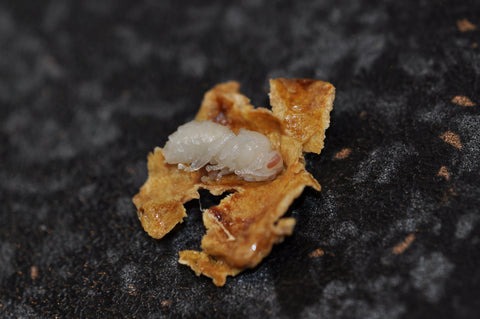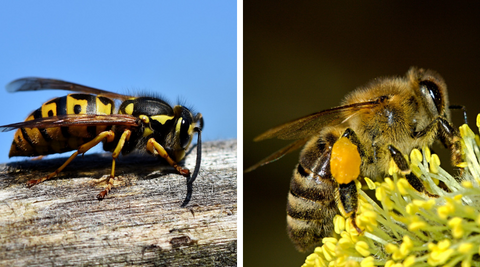It's swarm season again. And we experienced it firsthand. Time to share it with you!
Bees are on everyone's lips right now. Caring for bees is especially trendy right now, and that's a good thing. But it's kind of strange for me, because bees have always been a part of my life.
Our neighbors' grandfather used to have bees in his garden. I was always fascinated by them, but we were never allowed to get that close, but bees were still completely normal pets to me. I remember how he once came back from the sheep meadow where the hives were with a whole wheelbarrow full of "sleeping" bees. He claimed he had stunned them all with smoke to get to the honey. In reality, the whole hive was dead, for whatever reason; unfortunately, that happens sometimes. But I still remember how impressed I was by the number of bees, because normally you only see them here and there in the flowers. You wouldn't believe how heavy a swarm like that is.
Years later, my mother took over the beehives and now, for 10 years, bees have been a natural part of our family and I have been able to learn a lot about them.
People are often afraid of bees, and I don't understand why. But that's probably because I know the animals better and can assess them better. Knowledge takes away fear. And that's why I'm going to tell you something about bees today.
swarm of bees

When the queen then knocks on her capped cell from the inside and the weather is right (warm enough and not too windy), the old queen suddenly leaves the hive with a large portion of her colony, which is now completely full. When 20,000 of them suddenly leave the hive at once, it's an absolutely impressive experience and can even seem frightening.
The swarm will gather again not far from the old hive until it has all gathered together. This is the opportunity for the beekeeper to catch his bees, if he has noticed that they have left. If he doesn't catch them, the swarm will move away and search for a new home.
Without a beekeeper, our honey bees have no chance of survival due to introduced diseases and parasites. Therefore, you should always contact a beekeeper if you discover a swarm. The beekeeper who captures the swarm is then allowed to keep and manage the colony. However, most beekeepers try to prevent swarming so they can divide the colony themselves in a controlled manner and thus multiply it. To do this, they search for the queen cells and destroy them.
Most bees in a swarm are very full to survive the long flight distances. These bees have no interest in extending their stingers and stinging; they are fixated on the hive population. However, some guard bees, which stand guard to protect the swarm, can still sting if threatened.
A new people
Once the beekeeper has caught the bees, they place them in a new hive with fresh honeycomb. Catching them is actually very easy, depending on where the swarm was gathered. The bees cling to each other to protect the queen. You can then put them all together in a bucket or sweep them together, then place a queen excluder on top to prevent the larger queen from flying away. All the bees follow the queen, and once you have her, you have the entire swarm.
If it is an old queen, she will start laying eggs immediately. The new queen hatches in her old home and must first be mated before she can start breeding. When the temperature rises above 18°C, the princess and her drone entourage, the male bees, set off on what is known as the mating flight. The group flies about 3km and joins up with bees from another hive. How they all find each other is still being researched. If the queen has been mated by drones from another colony, she returns to the hive for the rest of her life or until a new queen is bred and immediately begins laying eggs to ensure the survival of the colony.
Bee sting
Bees only sting when threatened and are not naturally aggressive. This also varies from colony to colony, and an experienced beekeeper can tell how peaceful the colony is by the buzzing of the bees. If a bee does sting you, you should pull out the stinger quickly, because the venom sac is still attached and happily continues to pump venom into the sting. Since bees perceive movement much more quickly and can also move much faster than we can, stings usually only happen as accidents or in active defense of the hive if you are working on it and get too close to the queen. If you move very slowly, you are less at risk of being stung. We usually don't even notice the bee because it moves so quickly, but if we move even more slowly and relaxed, we have more opportunity to perceive the animal, and the animal can better assess us and avoid us. It also senses our mood and reflects it. The more excited you are, the more alarmed the bee is.
By the way, bees aren't interested in our food. They only like nectar. That's why they don't care whether you're grilling or eating a piece of cake.
If someone is bothering you, it's a yellow-black wasp and not a brown fluffy bee.

In Part 2, you'll learn all about honey production, where the wax comes from, and what the nasty Varroa mite is all about.































